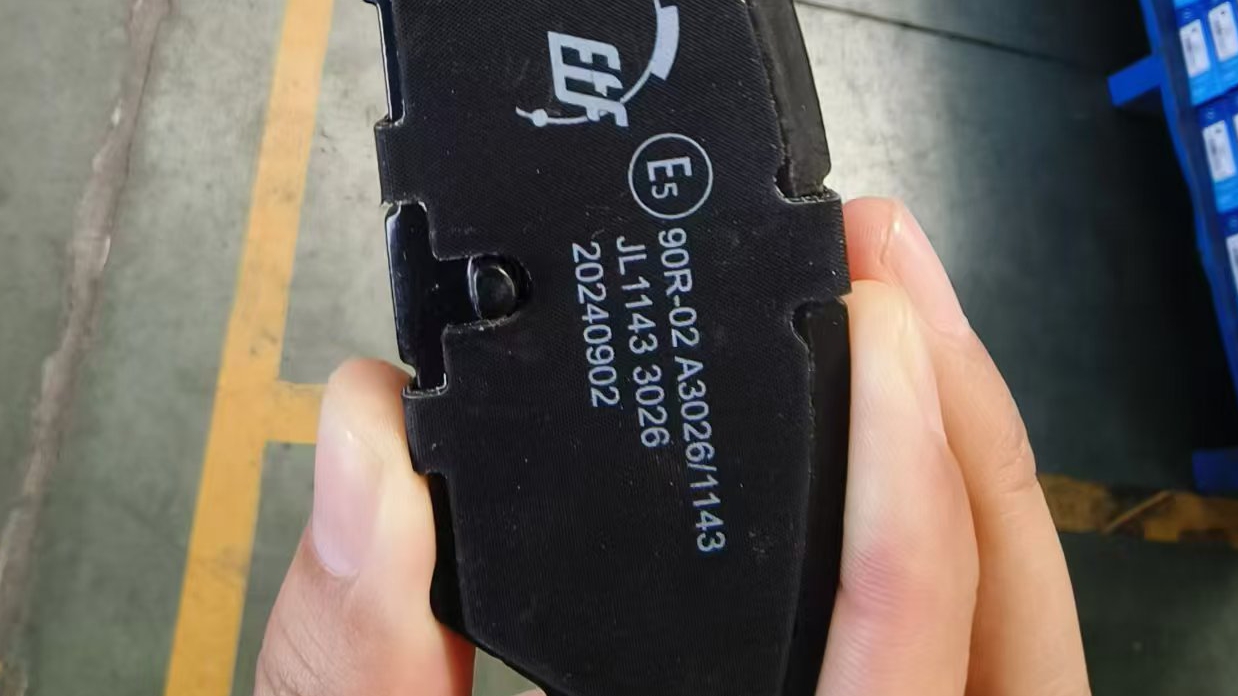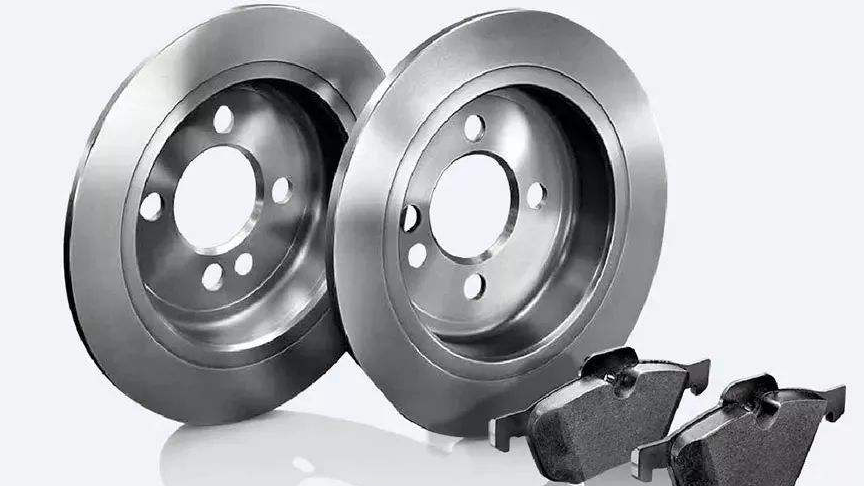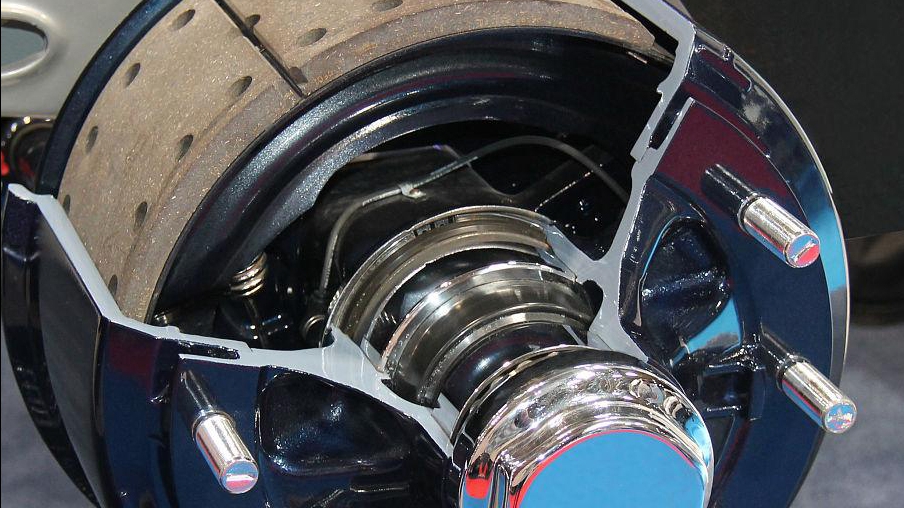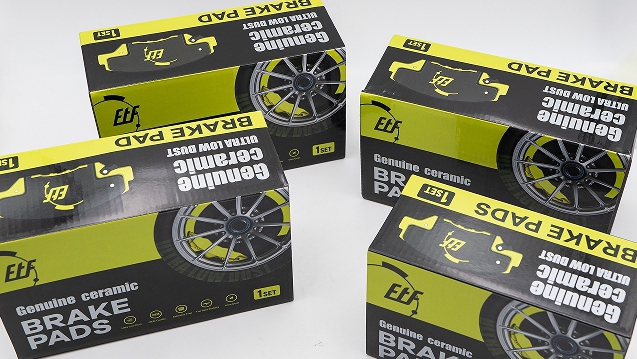What Kind of Brake Pads Should I Buy?
If you want the best overall performance, it's advisable to consult with your trusted mechanic to decide whether to stick with the same brake pads on your vehicle or upgrade to a new type. By taking your driving habits and patterns into account, your mechanic can help you determine which brake pad is best suited for your vehicle.
What Are Brake Pads and What Do They Do?
Most cars and light trucks are equipped with a disc brake system on all four wheels. The disc brake system consists of three components: a disc or rotor brake, a hydraulic piston assembly known as a brake caliper assembly, and a pair of pads. The disc brake pads are made of friction-creating materials. When the brake pedal is pressed, the hydraulic pistons push the brake pads against both sides of the brake rotor's flat surface, creating enough friction to stop the vehicle. The braking process causes the pads and rotors to wear down slightly with each brake application. This means they will periodically wear down enough to affect your vehicle's stopping power. When this happens, it means they must be replaced immediately.
What Makes a Good Brake Pad?
There's more to a good brake pad than just the ability to stop a vehicle. The ability to absorb and disperse heat, how quickly it will wear, and the amount of noise and dust it produces are all factors to consider when choosing a brake pad. It may be tempting to choose the lowest-cost brake pads, but it's essential to remember that you get what you pay for. Low-quality brake pads can be very noisy, wear faster, and cause wear on other brake system components, such as brake rotors, which means spending more in the long run.
The Most Common Types of Brake Pads in the Market
There are three main types of brake pads you'll find on passenger vehicles: non-asbestos organic, ceramic, and semi-metallic.
1.Semi-Metallic Brake Pads
Semi-metallic pads are made of 30-60 percent metal by weight composition, including other materials such as graphite lubricant. Semi-metallic pads are excellent performers in almost any weather condition and provide a firm brake feel. Because they come in many compound varieties, you can find a quality pad of this kind for everyday street driving or hard-performing braking. While semi-metal pads are known for their high performance and durability, they can also produce a large amount of dust and are a bit noisier than ceramic pads due to the added metals.
2.Ceramic Brake Pads
The smooth, sophisticated choice of ceramic pads is known for its easy, quiet stops and long-lasting performance. Ceramic pads are preferred for their quiet stops and consistent, all-around brake performance because they are made of dense ceramic material. Ceramic pads produce less brake dust. The majority of ceramic dust is vaporized by friction with the rotor, and the remaining dust is finer, lighter colored, and has a lower tendency to stick to wheels than the dust from semi-metal pads. Although slightly more expensive, ceramic pads may be the best choice for everyday driving but are not usually recommended for heavy-duty driving or aggressive braking. They can also perform under cold temperatures, lacking "cold-bite" or immediate braking performance.
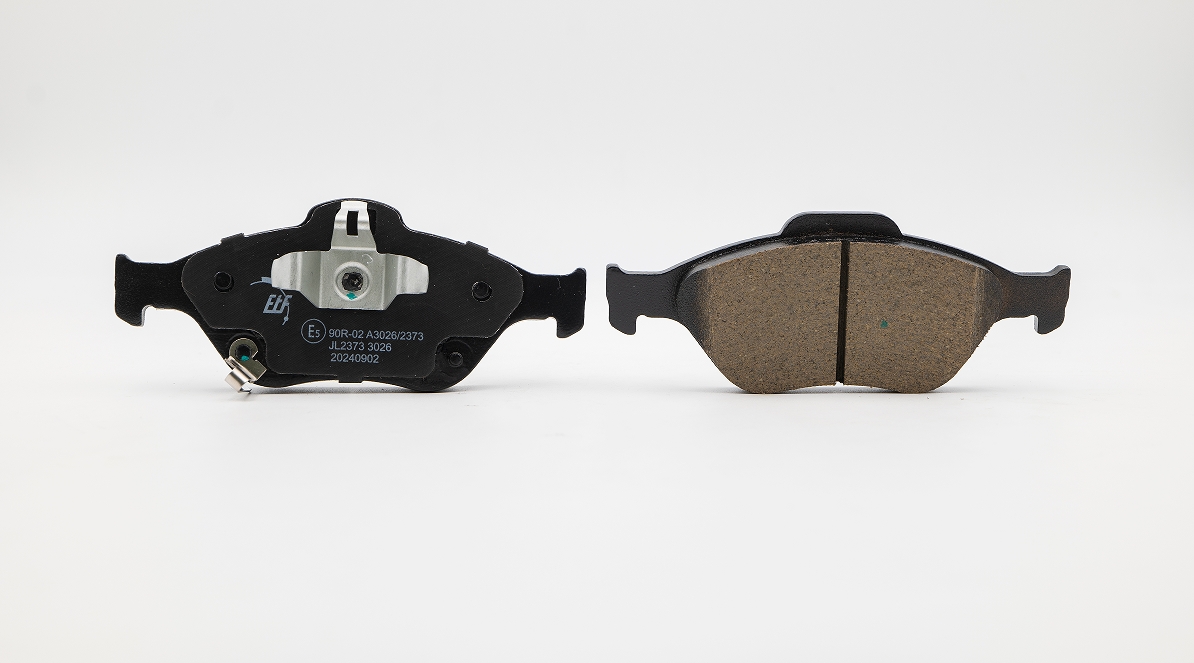
3.Non-Asbestos Organic Brake Pads
Because of their organic makeup, non-asbestos organic (NAO) brake pads do not pollute as they lose friction material and are easy to dispose of. NAO pads are softer than most other brake pads, making them quieter, but they wear faster and produce dust. They are best suited for lighter vehicle applications that do not require a lot of hard braking.
Brake Pad Chamfers, Slots, and Shapes Controlling Brake Noise
When the brake pad's friction surface is not in keeping with the caliper and rotor, the result is usually noise. However, brake pad manufacturers have some tricks to avoid this problem or move it out of the range of human hearing. The perfect application of a brake pad to the rotor would occur between two parallel surfaces. The friction material's surface would have the same amount of force applied to the entire surface, and the pad would not be flexed under pressure applied to the piston(s). The friction material would also generate the same coefficient of friction across the entire surface. In the real world, the rotor may not be parallel to the pad due to cornering forces and the hub's flexion. Due to engineering, packaging, and economic compromises, the brake pad's shape may not be optimal. The brake caliper, bracket, and hardware may not be in the best condition after being on the vehicle for an extended period.
Brake Pad Shape
Another factor that can influence brake noise is the shape of the brake pad's friction material. Original Equipment Manufacturers (OEM) align the shape of their brake pads to the entire system, including elements such as overall length, width, and the friction shape on the backing plate. Following the lead of Original Equipment Manufacturers (OEM), some aftermarket manufacturers have adjusted their pads' shape to suit older vehicles and their brake material blend characteristics. Some replacement brake pads will further optimize the brake material's shape to reduce noise and make better use of improved friction material.
Brake Pad Chamfers
A chamfer is an angled cut on the front and trailing edges of the friction puck. Chamfers can control how the edge of the pad interacts with the rotors and help prevent noise. They are designed to ensure that the broadest possible edge of the pad is in contact with the rotor. They can also help compensate for flexing in the pad for some applications that use a long pad. Some manufacturers also claim that it can improve the pad's structure while putting the pad into the rotor more effectively. There's a lot of engineering behind the chamfer. A chamfer may be a specific application and may even be proprietary to the manufacturer. However, some pads do not need a chamfer because of the type of friction material used or the overall brake system's design. Some shops and technicians are still grinding chamfers into new brake pads. This was a practice that began in the 1970s when the brake pads' quality was not as it is today. Some of the old pads were flashing at the edge that needed to be knocked off. Most modern brake pads without a chamfer should not be ground to a rounded edge. In most cases, it is a waste of time.
Brake Pad Slots
In a brake pad, the slots or channels have two functions. First, the brake pad's natural frequency can be shifted by breaking the friction material into smaller components. Second, they allow the gases to escape from the pad.
Brake Pad Backing Plates
The backing plate also plays a role in the noise of the brake pad. If the backing plate flexes under the caliper's mechanical forces, the rotor's friction footprint changes as the driver modulates the hydraulic pressure. Brake pad manufacturers can either add thickness to the backing plate or change the attachment methods to minimize rivet holes or integral voids. The next time you get a new brake pad out of the box, take some time to check the pad. The chances are that many engineers have spent a lot of time making sure that the pad set is quiet and efficient when installed on the vehicle.
Brake Shim
Brake shims are thin layers of rubber or metal that fit between the brake pads and the rotors to correct small imperfections that cause brake noise. They function much like shims in cabinetry: if the kitchen floor of an old house is a little crooked, the cabinet installer will add a couple of thin, wooden shims to level out the cabinets. Brake shims work much the same way to adjust otherwise regular brakes. For many new vehicles with new brake parts, brake shims function as anti-rattle pads on the most basic level. They keep the pads and rotors from banging against each other or squealing. Some brake part kits come with the shims already attached to the brake pads. Some come with different shims with adhesive backings, which need to be affixed to the brake pads' back. Other shims must be purchased separately and attached to the pads with double-sided tape. In any case, brake shims are easy to use and install, and they can make a big difference in how the brake parts work together. While most are made from rubber, it's possible to upgrade to something like titanium brake shims.
How Brake Rotors Work
Most drivers know that they need routine maintenance to keep their cars in the right working conditions. This may involve changing engine oil regularly, maintaining proper tire pressure, and occasionally monitoring the levels of each of the vehicle's vital fluids. Some components and systems require a little more maintenance, while others require a little less. As far as your vehicle's braking system is concerned, if you check the fluid regularly and change your brake pads, you're on the right track. Brake rotors are an essential component of the braking system that stops your vehicle. Brake rotors, also called brake discs, are what your vehicle's brake pads clamp down on to stop the wheels from spinning. Some people may be surprised to learn that brake rotors are just as crucial as brake pads to stop their vehicles.
Drilled Brake Rotors
As the name implies, a drilled brake rotor has holes in it. Having holes drilled into any of your brake parts may seem counterintuitive, especially the brake rotors. After all, a rotor full of holes means less surface area for the brake pads to grab and stop the car, but there are a few reasons why drilled brake rotors make sense. The first is heat. When the brake pad grabs the rotor, it creates friction that generates heat. If the heat cannot escape, the brakes will fade, which reduces the brakes' stopping power. The second is to prevent gas buildup. That's not much of a problem anymore; the materials used in some older types of brake pads caused gas to build up between the rotors and the pads. The gas also limited the stopping power. The last reason is water. If a car passes through a puddle, a car wash, or even a rainstorm, the brake rotors can get wet. A wet brake rotor is slippery and challenging for the brake pads to hold. Drilled holes on the brake rotor make it easy for heat, gas, and water to move quickly away from the rotor surface, keeping the brake performance strong. The downside of using drilled rotors on your vehicle is that all of those holes tend to weaken the rotors, just as punching holes in a house's wall would weaken the wall. After repeated stressful driving, the rotors may crack.
Slotted Rotors
Slotted brake rotors are designed to use slots curved into the flat metal surface to move gas, heat, and water away from the surface of the rotors. Slots are like irrigation ditches designed to move unwanted materials safely out of the way. Slotted brake rotors are popular with performance car drivers because the driving they do puts a lot of pressure on the rotors. Since slotted brake rotors are not perfect because they tend to wear down brake pads very quickly, the most common type of performance brake rotors found on production performance cars are of the drilled variety. While that type of construction is too weak for racing applications, most everyday drivers should have no trouble with drilled rotors on their street cars and save the slotted rotors for track-bound cars.
Conclusion
When deciding which brake pad you need, use the above features to determine what fits your driving best. Semi-metallic pads are a great solution when driving mostly in extreme weather or mountain areas or often toeing and braking aggressively. If you're looking for less aggressive braking with quiet stops and cleaner wheels, ceramic brake pads will meet these requirements.
